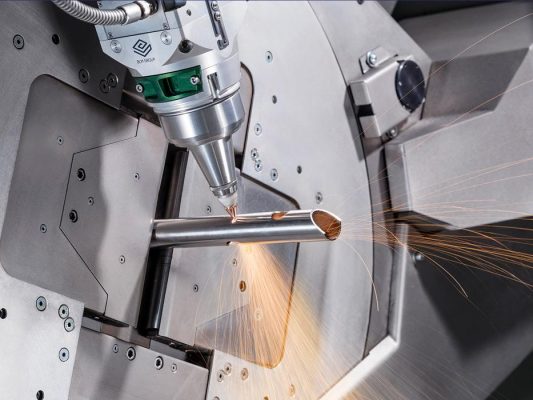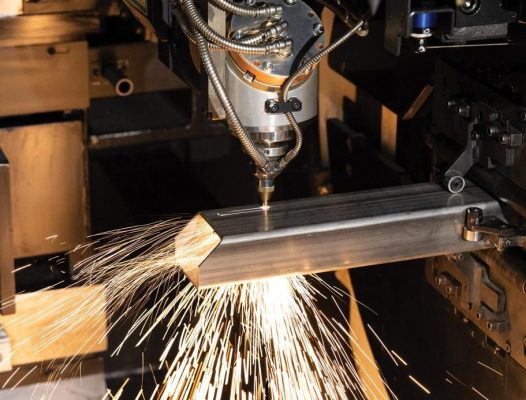pipe laser cutting istanbul
Pipe laser cutting is a modern manufacturing process that utilizes a focused laser beam to cut through metal pipes and tubes with exceptional accuracy and speed. This technology has revolutionized the metal fabrication industry, offering numerous advantages over traditional cutting methods.

How Pipe Laser Cutting Works
- Laser Beam Generation: A powerful laser, typically a fiber laser, generates a highly focused beam of light.
- Beam Focusing: The beam is directed onto the pipe and focused to a tiny spot, creating intense heat.
- Material Melting: The heat melts the material at the focal point.
- Gas Assisted Cutting: A high-pressure gas jet is often used to blow away the molten material, leaving a clean cut.
Advantages of Pipe Laser Cutting
- Unparalleled Precision: Laser cutting offers exceptional accuracy and detail, allowing for complex shapes, intricate patterns, and tight tolerances. This precision is crucial in applications where even slight variations can compromise performance or safety.
- Remarkable Speed: The process is significantly faster than traditional methods, such as sawing or plasma cutting. This increased speed translates into higher productivity, shorter lead times, and reduced manufacturing costs.
- Exceptional Efficiency: Laser cutting minimizes material waste by cutting directly to the desired shape, reducing the need for secondary finishing operations. This efficiency results in lower costs and a more sustainable manufacturing process.
- Unmatched Versatility: Laser cutting can handle a wide range of pipe materials and sizes, from thin-walled stainless steel tubes to thick-walled carbon steel pipes. This versatility makes it a valuable tool for manufacturers in various industries.
- Superior Quality: The cuts produced by laser cutting are clean, burr-free, and have a high-quality finish. This eliminates the need for extensive post-processing, further reducing costs and improving overall efficiency.
Applications of Pipe Laser Cutting
- Structural Fabrication: Pipes and tubes are essential components in various structures, from buildings to bridges. Laser cutting ensures precise and efficient assembly of these components.
- Automotive Industry: Components such as exhaust systems, frames, and engine parts are often fabricated using laser cutting. The technology’s precision and speed are essential for meeting the demanding requirements of the automotive industry.
- Machinery and Equipment: Laser cutting is used to create intricate parts for machinery and equipment. The ability to produce complex shapes and patterns with high accuracy is crucial in these applications.
- Industrial Manufacturing: A wide range of industries, including aerospace, agriculture, oil and gas, and renewable energy, benefit from laser cutting technology. The process’s versatility and efficiency make it suitable for a variety of applications.

Types of Laser Cutting Machines for Pipes
- 2D Laser Cutting Machines: These machines are suitable for cutting simple shapes and straight lines.
- 3D Laser Cutting Machines: These advanced machines can create complex 3D shapes and patterns, offering even greater versatility and precision.
One of the key advantages of pipe laser cutting is its ability to handle complex geometries with ease. Traditional cutting methods, such as sawing or plasma cutting, often struggle with intricate shapes and can result in burrs or uneven edges. Laser cutting, on the other hand, can produce clean, precise cuts even for the most complex designs.
In addition to its precision, pipe laser cutting is also highly efficient. The process is significantly faster than traditional methods, allowing manufacturers to increase production rates and reduce lead times. The laser beam can be focused to a very small spot, minimizing material waste and reducing the need for secondary finishing operations. This efficiency translates into lower costs and improved profitability.
Furthermore, pipe laser cutting is a versatile process that can be used to cut a wide range of pipe materials and sizes. From thin-walled stainless steel tubes to thick-walled carbon steel pipes, laser cutting can handle a variety of materials with equal precision. The process is also suitable for a wide range of pipe diameters, making it a valuable tool for manufacturers in various industries.
Overall, pipe laser cutting is a powerful and versatile technology that offers numerous benefits over traditional cutting methods. Its precision, speed, efficiency, versatility, and quality make it an ideal choice for a wide range of applications. As laser cutting technology continues to advance, we can expect to see even more innovative and efficient applications in the future.
Tabulka cen
| Pipe Diameter | Material Type | Price (USD/ton) |
|---|---|---|
| Small (e.g., 25 mm) | Carbon Steel | 310 |
| Small (e.g., 25 mm) | Stainless Steel | 350 |
| Medium (e.g., 50 mm) | Carbon Steel | 320 |
| Medium (e.g., 50 mm) | Stainless Steel | 370 |
| Large (e.g., 75 mm) | Carbon Steel | 340 |
| Large (e.g., 75 mm) | Stainless Steel | 390 |
| Extra Large (e.g., 100 mm) | Carbon Steel | 350 |
| Extra Large (e.g., 100 mm) | Stainless Steel | 410 |
